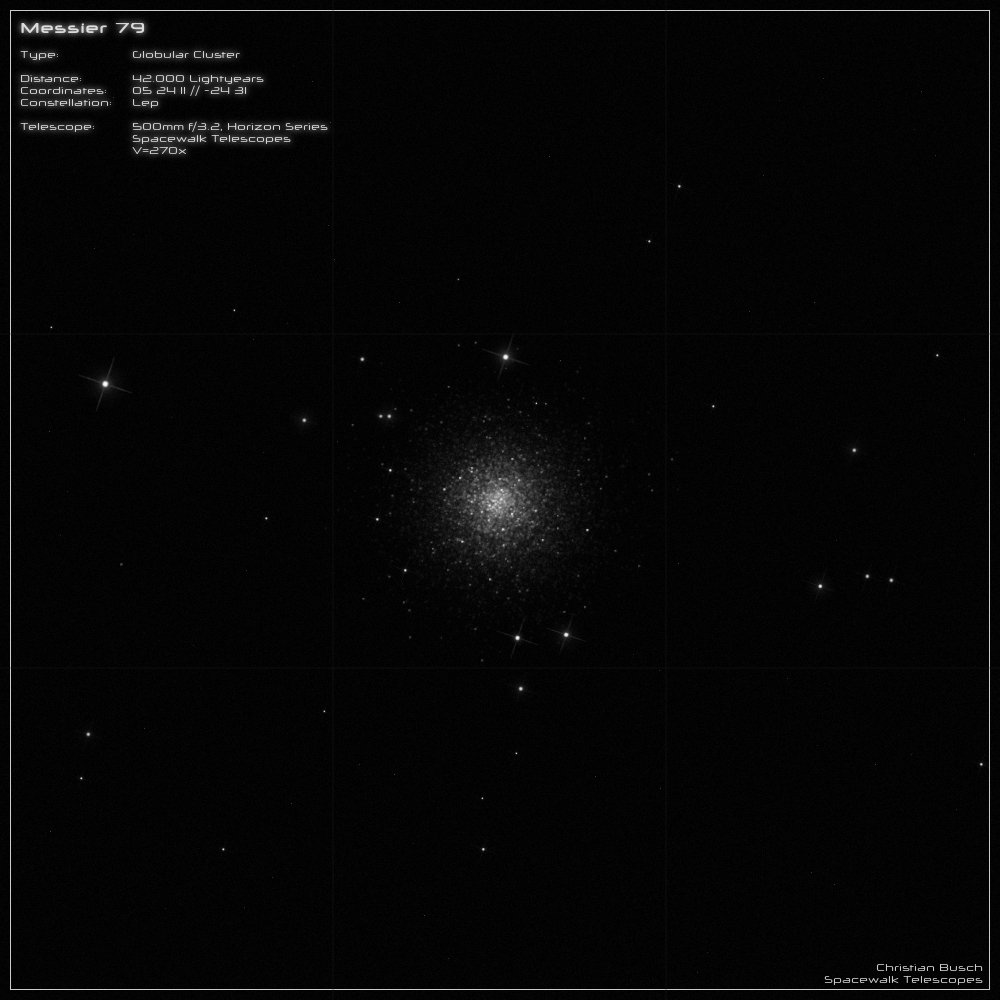Messier 79 - Globular Cluster
The globular cluster (GC) "Messier 79" is located 41,000 light-years away in the constellation "Lepus" and can therefore best be observed in the winter months. It
has an apparent magnitude of m= 7.9mag and an extension of 9.6' (arcminutes). This cluster was discovered in October 1780 by Pierre Méchain.
Messier 79 is located 60,000 light-years away from the galactic center, but in the opposite direction. For this reason, it is believed that it is not a globular cluster that
formed together with our Milky Way, but that it was captured and is therefore of intergalactic nature. Originally it could come from the "Canis Major dwarf galaxy",
which has right now a very close encounter with our galaxy. However, this theory has not yet been proven and so is still an object of study.
The diameter of Messier 79 is 114 light-years. In this volume there is an almost unbelievable number of 900,000 stars, which give the cluster an absolute magnitude
of M= -7.6mag. That corresponds to the luminosity of 95,000 suns. Besides white dwarfs and "blue stragglers" many red giant stars are found in the GC. Studies of
the metallicity of the stars have revealed an age of 12-13 billion years.
Exciting is also the fact that the globular cluster is torn apart by the tidal forces of our Milky Way and it has even lost many thousands of stars in the form of a tidal
stream.
----------------------------------------------------------------------------------------------------------------------------------------------
On a clear winter night Messier 79 offers a wonderful sight in my 20" f/3.2 telescope. Even at the lowest magnification of 120x the globular cluster is resolved.
But it is most beautiful at a magnification of 270x and more (if seeing allows it). Then the cluster is completely resolved into countless stars in the core as well as in
the outskirts. The core appears very dense, so the brightness increases strongly from the outside to the inside - the appearance reminds a bit of Messier 15 or Messier 92.
Directly north of the cluster there is a bright star which offers a great contrast. Altogether a very thankful and beautiful object. :)

